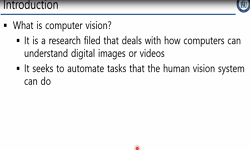Privately Owned Public Spaces (POPS) are integral urban areas designed for public use despite their private ownership. These spaces, including plazas, atriums, and walkways, are essential for providing accessible public areas to urban residents. Howev...
http://chineseinput.net/에서 pinyin(병음)방식으로 중국어를 변환할 수 있습니다.
변환된 중국어를 복사하여 사용하시면 됩니다.
- 中文 을 입력하시려면 zhongwen을 입력하시고 space를누르시면됩니다.
- 北京 을 입력하시려면 beijing을 입력하시고 space를 누르시면 됩니다.
https://www.riss.kr/link?id=T17068984
- 저자
-
발행사항
울산 : Ulsan National Institute of Science and Technology, 2024
-
학위논문사항
학위논문(석사) -- Ulsan National Institute of Science and Technology , Engineering Urban Infrastructure Engineering , 2024. 8
-
발행연도
2024
-
작성언어
영어
- 주제어
-
발행국(도시)
울산
-
형태사항
80 ; 26 cm
-
일반주기명
지도교수: Kim, Jeongseob
-
UCI식별코드
I804:31001-200000813436
- 소장기관
-
0
상세조회 -
0
다운로드
부가정보
다국어 초록 (Multilingual Abstract)
Privately Owned Public Spaces (POPS) are integral urban areas designed for public use despite their private ownership. These spaces, including plazas, atriums, and walkways, are essential for providing accessible public areas to urban residents. However, concerns regarding their management and accessibility often raise questions about their actual utility. This study investigates pedestrian behaviors within POPS in Ulsan Metropolitan City, South Korea by using advanced computer vision techniques and clustering algorithms to offer a detailed analysis of pedestrian movements and interactions. The research utilizes YOLOv5 algorithms for real-time object detection and HDBSCAN clustering to categorize pedestrian behaviors based on their spatial and temporal properties. These methodologies facilitate a comprehensive understanding of how people interact with POPS throughout the day, offering substantial enhancements in the management and design of these spaces. The study employs a heuristic-based classification algorithm, setting specific thresholds for speed, pause duration, and interaction to differentiate between necessary, optional, and social activities. The key findings reveal significant insights into pedestrian usage patterns, spatial analysis, and behavioral patterns within POPS. The dominance of swift passers indicates that most pedestrians use the area for quick transit, especially through the crosswalk, while the significant presence of casual walkers during mid-morning hours suggests leisurely activities or errands. Relaxed strollers and leisurely explorers show specific peaks during certain times, indicating leisurely exploration, whereas steady wanderers display consistent presence, suggesting regular movement within POPS. Brief visitors, although least represented, indicate short-term activities or waiting periods. Spatial analysis identified high-activity areas concentrated around transit points such as crosswalks and bus stations. POPS areas (ROI 1, ROI 2, ROI 3, and ROI 4) exhibited moderate but crucial usage patterns for socialization and relaxation, especially during non-peak hours and weekends. These findings underscore the importance of these spaces in urban environments, as they accommodate a diverse range of activities from commuting to social interactions. Behavioral patterns revealed that pedestrians frequently use POPS as temporary pause spots before engaging with other urban functions or transportation, even in the absence of primary seating structures. Optional movements are most prevalent in the evenings of March and afternoons of April, influenced by the shadow cast by high twin buildings. Social activities, although generally rare, are notable in the mornings and more frequent in April, closely linked to POPS. The study area is predominantly used by necessary commuters, yet pedestrians often utilize secondary seating areas of POPS to stay, wait, sit, and rest, indicating a high potential for optional and social activities. The classification algorithm categorized pedestrian activities into necessary, optional, and social interactions based on specific thresholds for speed and interaction. Necessary activities were predominant during peak commuting times, while optional activities were significant during non-peak hours, particularly in the evenings and weekends. Social activities were more prevalent during leisure time, especially on weekends. The validation results highlighted strong recall for optional activities but identified areas for improvement in precision to reduce misclassification. Moreover, the integration of computer vision techniques with urban studies demonstrates significant potential for improving public space management and urban planning. Data-driven insights from YOLOv5 analyses offer enhanced design feedback, improving accessibility and inclusivity in POPS. Identifying hotspot areas, significant pedestrian behaviors, and conflicts, such as those between pedestrians and food-delivery motorcyclists, highlights the need for targeted interventions to ensure safety and usability. Leveraging advanced analytical tools like YOLOv5 provides a nuanced understanding of pedestrian dynamics in POPS, contributing to the creation of more accessible, inclusive, and functional public spaces. These insights can inform better urban planning practices and foster improved public space management, ensuring that POPS serve their intended functions effectively and enhance the quality of urban life.
목차 (Table of Contents)
- Chapter 1. Introduction 1
- 1.1. Research background 2
- 1.2. Research organization 4
- Chapter 2. Theoretical and methodological background 5
- 2.1. Public Life Studies 5
- Chapter 1. Introduction 1
- 1.1. Research background 2
- 1.2. Research organization 4
- Chapter 2. Theoretical and methodological background 5
- 2.1. Public Life Studies 5
- 2.2. Privately Owned Public Space 12
- 2.3. Computer Vision in Urban Studies 16
- 2.4. You Only Look Once (YOLO) algorithm 19
- 2.5. Research Framework 20
- Chapter 3. Methodology 22
- 3.1. Overview 22
- 3.2. Data Collection 23
- 3.3. Data Preprocessing 27
- 3.4. Detection and tracking pedestrian 28
- 3.5. Alignment of Geospatial calibration 31
- 3.6. Trajectory Analysis and Pattern Mining 33
- 3.7. Activity Classification 36
- Chapter 4. Results and Findings 39
- 4.1. YOLOv5 Attributes and Counting 39
- 4.2. Trajectory Pattern Mining 40
- 4.3. Activity Classification 49
- 4.3.1. Validation Results for Activity Classification. 53
- 4.3.2. Sensitivity Analysis 54
- Chapter 5. Conclusion 56
- 5.1. Limitation 57
- References 65












